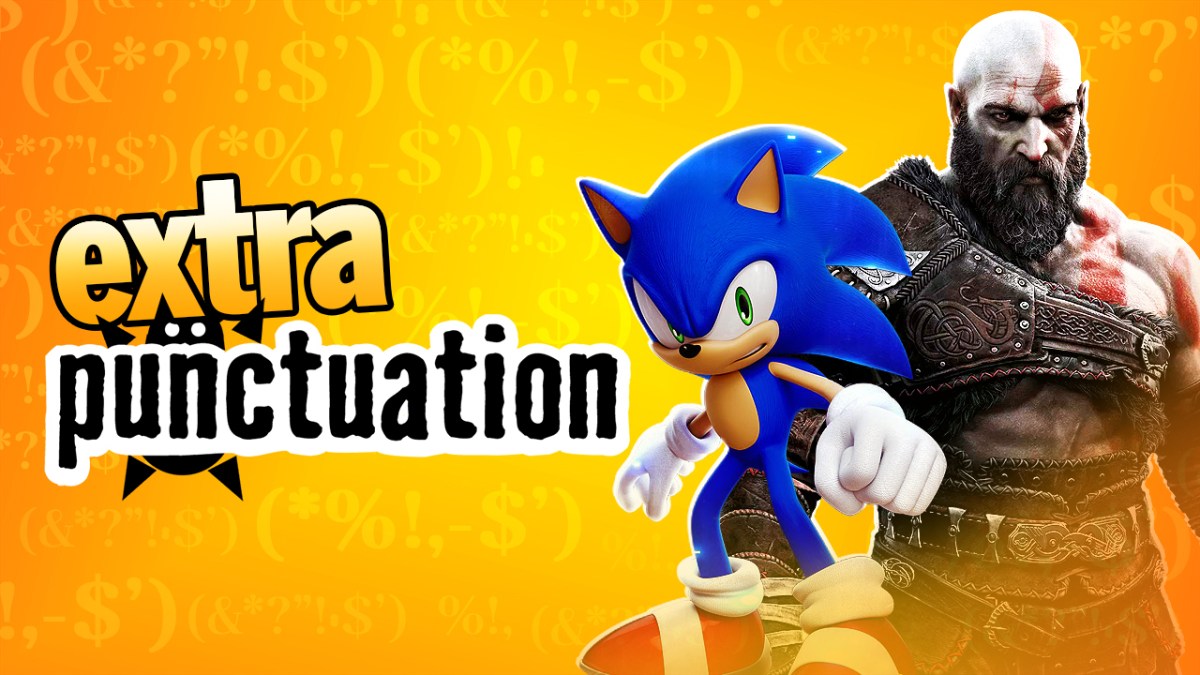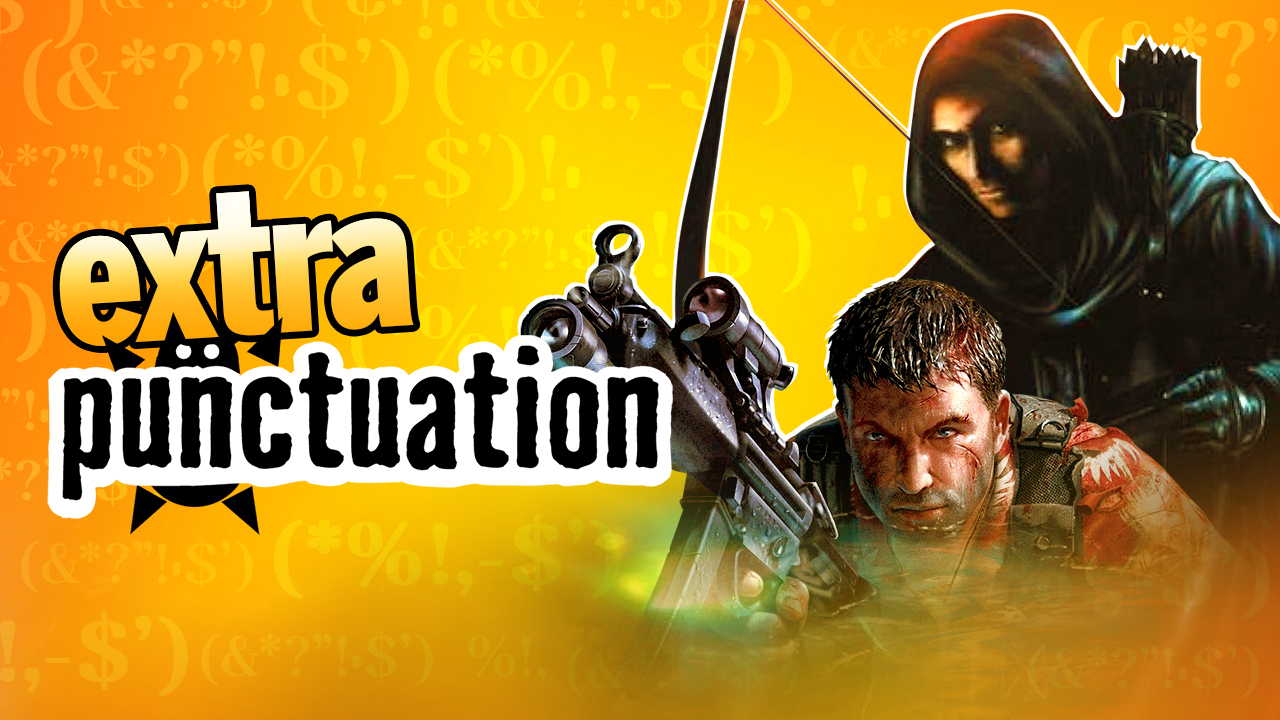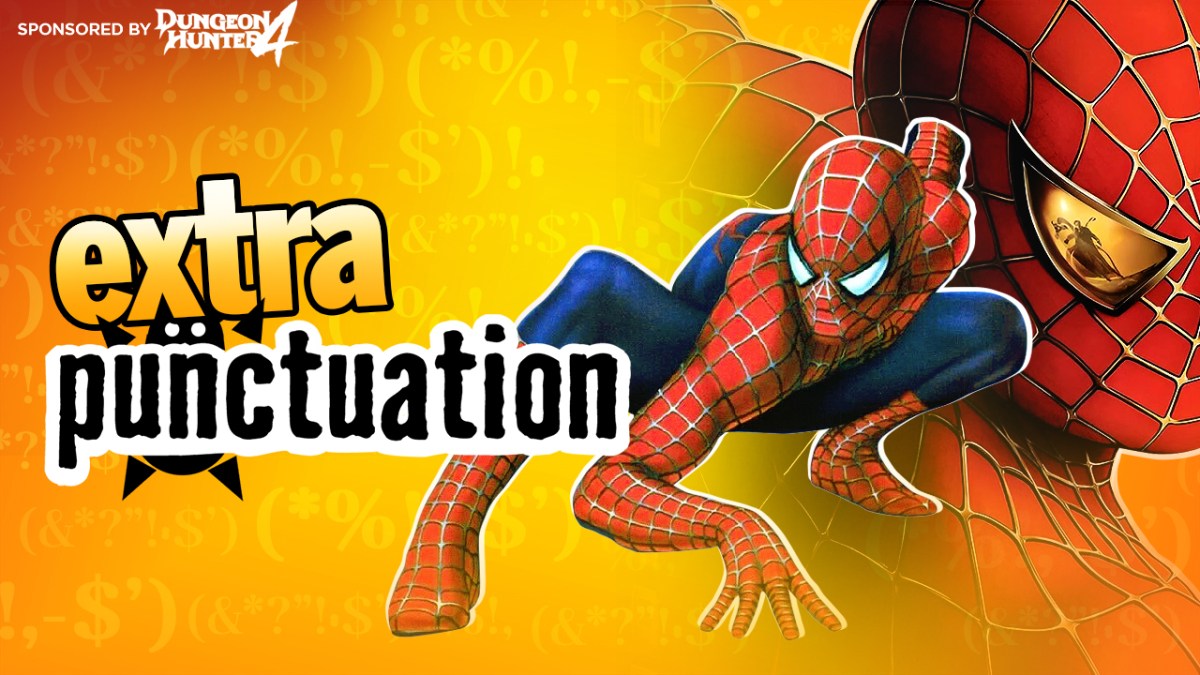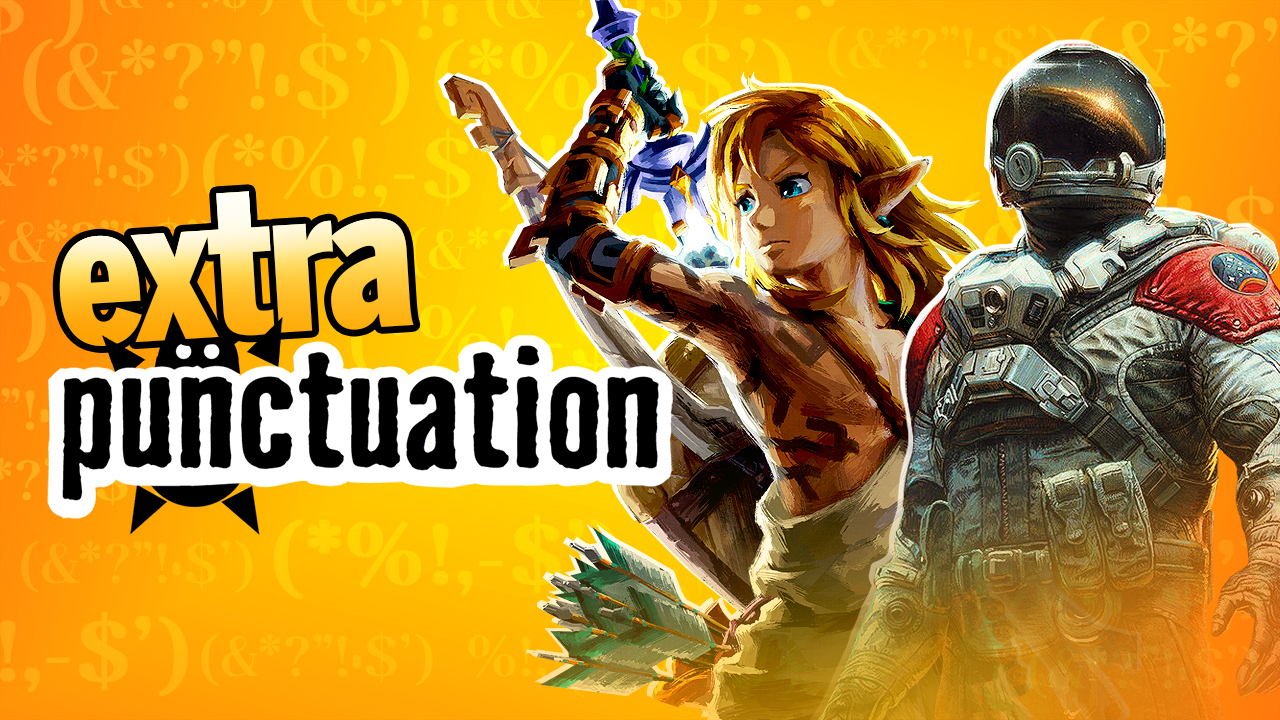This week on Extra Punctuation, Yahtzee examines the tonal issues of many current AAA video games, including the tone of a game like God of War Ragnarok and Sonic Frontiers.
Extra Punctuation Transcript
Games industry, your mother and I are worried. We need to have a conversation about your tone. And I’m not talking about that purple eyeshadow you’ve been wearing to school. I feel like I’ve reviewed an awful lot of games with tone issues lately so it’s probably time to highlight the problem.
What we mean by tone in this context is the narrative quality wherein the nuts and bolts of the presentation, i.e., visuals, audio, and dialogue, don’t evoke emotions contrary to the ones intended by the story. It’s why they didn’t have Clint Eastwood wearing bunny ears in A Fistful of Dollars.
But tonal disconnect in games is one of those things where, if I point it out in the review, the inevitable defenders in the comments will be all like “Well it didn’t bother ME! I don’t care!” And fair enough, it’s not a mistake on the same level as the game controlling like dogshit or crashing to desktop every time the main character farts. It doesn’t so much ruin the game as squander its potential. I want powerful emotional narrative experiences in games and tonal clash is the kind of thing that can really let all the air out at the last moment.
Case in point: Sonic Frontiers. Start the game and you step into a washed out, rainy landscape, carpeted with realistic overgrown grass that blows aside to reveal the forgotten ruins of a once great civilization. Haunting music plays and we feel exposed in an atmosphere of loneliness and sorrow. And then, scene set, we take control of our blue cartoon mouse in sneakers with eyes the size of hubcaps.
Sonic the Hedgehog has been the fucking emperor of tone issues for a long time, now. It didn’t start with him snogging a realistic human in Sonic 2006, but that may have been the peak of the infection. Without doing any proper research I might theorise that Shadow the Hedgehog may have been patient zero. Thing is, though, when I pointed out that it felt tonally inconsistent to put Sonic the Hedgehog in fucking Death Stranding, the Sonic fans in the comments – who I would call, in the nicest possible spirit, a unique breed – were all like “Oh, I liked the theming. I think it’s good that Sonic can have a maturer, introspective atmosphere to express a more complex dramatic range.” And in reply I look at them, and then I look at Sonic, and then I look at them again. And then I hold out my hands and say “HE’S A FUCKING BLUE CARTOON MOUSE IN SNEAKERS.”
I mean… if you don’t get my point, here, I don’t think I can explain it to you. It’s like having to explain why you shouldn’t remake Children of Men with Clive Owen’s character replaced with Mickey Mouse. I think Sonic’s problem IS the fans, frankly. If you compare Sonic to his old sparring partner Mario, Mario is still going strong because Mario has been mostly tonally consistent. Couple of blips here and there like when we first saw the realistic humans and dinosaurs in the Mario Odyssey trailer but I think in execution they gelled surprisingly well with Mario’s general magic drug trip vibe. Mario has always been aimed squarely at the kids and continually recreates itself for a new generation of kids. Sonic’s problem is that it keeps trying to cling to established fans as they’ve grown up and started seeking more mature entertainment. So they add shit like dark broody hedgehogs with guns and bats with their tits hanging out instead of telling them to piss off out of Little Timmy’s play pen and go watch documentaries with the other grown-ups.
Well, that should liven up the fucking comment section. Let’s talk about something else. See, one of the reasons video games in particular tend to struggle with tone is because as well as keeping the visuals and sound and all that emotionally consistent with the story they have the additional element of gameplay mechanics that can also affect the emotional canvas. They’ve got to worry about – altogether now – ludonarrative dissonance! And this is something that comes up a lot in open quotes “cinematic” games like your standard triple-A ghost train ride that continue to tread the misguided path of trying to treat game storytelling like an unusually long movie where you have to hold down buttons to keep the reels turning.
Let’s focus on God of War: Ragnarok for relevance’s sake, although the issue I’m about to highlight is very common to ghost train rides. In God of War: Ragnarok there is a fuckload of chatter dialogue. As Kratos and his entourage navigate the environment they’re constantly bantering about what they’re doing and the last major plot development or just whatever’s on their mind. But they’re also constantly being beset by random outbreaks of combat each time they enter one of the designated arenas on the ghost train rail. And these two elements frequently clash with repeated unintentional hilarity.
Kratos’ severed head hetero lifemate Mimir will be talking about the one time he tripped on his sporran and burnt the haggis when suddenly a bunch of screaming murderers will jump down on the party from above, then there’s a hideously violent fight scene as Kratos brutally hacks them all to death while screaming and getting splattered in gore, and as the last one falls, the intense music fades and for a moment all is silent but for the shredded giblets dripping off the ceiling, and then Mimir goes “So anyway, about that haggis.”
Then I have another of my Sonic the Hedgehog crazy pills moments. Again, if you don’t see why this comes across as ridiculous, I can’t explain it to you. Kratos just murdered, like, seven fucking dudes in a desperate battle for his own survival. On top of that, Kratos’ entire character in the two recent instalments has been built around him trying to escape his past as a violent monster. These characters in this context should not be shrugging off a pitched battle to the death like it was a brief spot of heavy traffic that made them late for a meeting. This is the time for panting and sweating and proceeding cautiously in case any more attackers lie in wait, not haggis anecdotes.
As with so many of the issues with overmoneyed triple-A games, this one stems from trying to be too many things at once. It wants to tell its story, but at the same time, it wants to be a sixty hour extravaganza of gameplay and set pieces. As such, the plot of God of War: Ragnarok is an absurdly badly paced one, with hours of padded out gameplay between every significant story update. And because the intention is to be a story-based experience, inane chatter is used to string those moments together with a flimsy breadcrumb trail of debates, asides and post-match commentaries. But that obligation is forced to exist in the same space as the equivalent obligation to sprinkle in generic combat every other step because we are still, after all, a video game.
The use of combat as an all-purpose recurring gameplay challenge has always caused tone issues in any game where the protagonist isn’t supposed to be a GTA or Doom 2016-style violent psychopath. That’s one thing the Last of Us games have over their spiritual predecessors the Uncharted series; at least The Last of Us 2 is consistently miserable. The quippy, swashbuckling adventure tone of the Uncharted games always felt off when combined with the literal hundreds of jobbing mercenaries Nathan Drake mercilessly guns down in pursuit of the treasures.
The tendency at this point is to shrug and accept all this as an inevitability of the format, but that needn’t be the case, it just requires a little more consideration of how gameplay enforces tone. Did Nathan Drake have to kill everyone stone dead or could we have based the combat around knocking people out with righteous fisticuffs and cleverly positioned chandeliers, tying them to trees and leaving them to shake their fists like Dastardly and Muttley?
Better yet, tell stories in ways better suited to the interactive medium rather than the traditional filmic approach. Design games like Hardspace Shipbreaker or This War of Mine where the basic nuts and bolts of the player’s tasks create the intended tone directly.
You know, it’s possible there’s always going to be potential tone problems in video games just because a player has to be in control. If they want to do roly-polies through a harrowing death scene and teabag the grieving widow at the funeral, you can’t stop them. But then again, if the player wants a narrative experience, and is sufficiently immersed, then they’ll usually be happy to play along. At least I am. Half-Life 2 lets you retain complete control throughout its dialogue scenes and I’d always try to be a good sport, standing in what seemed like a logical place for Gordon Freeman to stand and nodding the mouse up and down to agree with things characters said. On the first playthrough, at any rate. On all future playthroughs I’d climb all over the furniture and try to jump onto Dr. Kleiner’s head because I’m only fucking human.






Published: Dec 15, 2022 12:00 pm